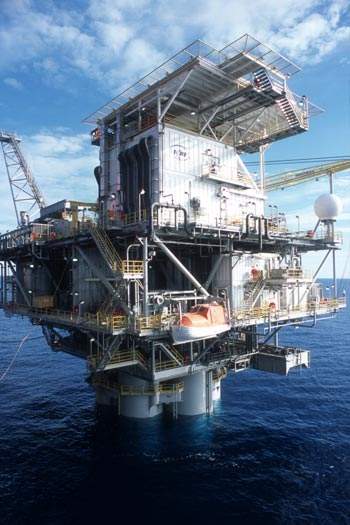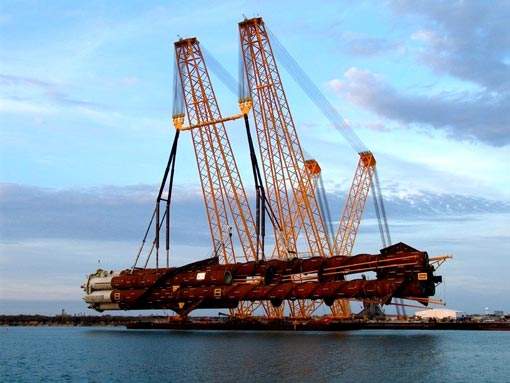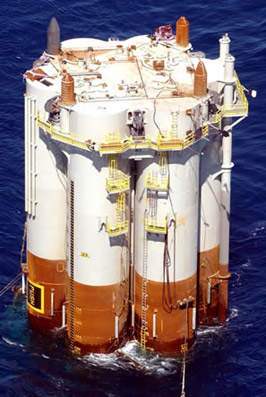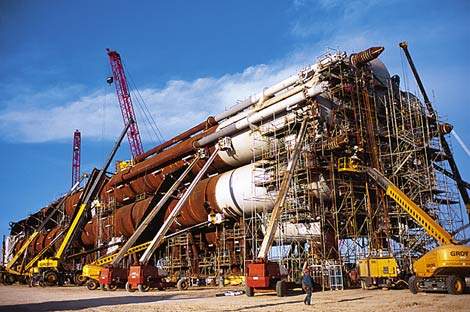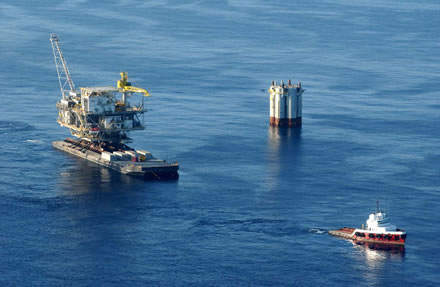The Red Hawk field is located in Garden Banks block 877 in the deepwater Gulf of Mexico. It has been developed using the world’s first cell spar facility.
The field was operated by Kerr-McGee with a 50% interest on behalf of Devon Energy (50%). Later, it was acquired by Anadarko Petroleum in 2006. It is located in 5,300ft of water.
Production from the first of its two subsea wells was realised only 24 months after sanctioning. It has been estimated that the field has a resource base of approximately 250 billion cubic feet of natural gas.
With both wells onstream, production peaked at 120 million cubic feet per day, however the design allows the facility to be expanded to accommodate a production capacity of up to 300 million cubic feet per day.
Production was stopped temporarily because of Hurricane Katrina in 2005 and resumed in April 2006.
A development well was spudded at the field in April 2009. Drilling was carried out by the Transocean Discoverer Spirit drillship in March 2009.
A development operations plan for the field was submitted to Minerals Management Service (MMS), a US federal agency, in March 2009. The plan involved installation of four lease-term pipelines, umbilical and connecting well #003.
Cell spar floating production facility
The cell spar floating production facility is the third generation of the spar systems, all of which were pioneered by Kerr-McGee. This innovative technology reduces the reserve threshold for economical development of deepwater fields.
The Spar, named the Kerr-McGee Global Producer IX, measures 560ft in length, (50ft above water level) and consists of a topsides on a tripartite hull. An additional gas compression was installed at the spar in 2007.
Topsides
The topsides consist of three decks: the main (top) deck and the production (middle) deck, both measuring 112ft x 133ft, and the spar deck ,which measures 75ft x 91ft. The hull weighs 7,200t and is enough to accommodate an initial 3,600t of topsides payload.
The upper hull system is based around a hard tank. This consists of six tubes surrounding a seventh, each 20ft in diameter and connected together by structural steel. It is the cylindrical tubes that provide the spar for its necessary buoyancy. They contain variable-ballast tanks and redundant, independent cells. Externally, they are surrounded by helical strakes, which suppress vortex-induced vibration.
The middle hull section is an extension of three of the seven cylindrical tubes, and serves as a rigid connection between the hard tank and the keel tank. The structure contains horizontal heave plates dampen the heave response.
The lower section, or keel, contains the permanent ballast (magnetite). This is installed at the quayside. The hull structure was engineered and built in the US in several sections at Technip’s Gulf Marine Fabricators in Ingleside.
Technip’s scope of work for the project also included EPCI delivery of the topsides, also fabricated at Gulf Marine Fabricators, offshore installation of hull, moorings and topsides, as well as offshore flowlines and umbilical installation, export SCR installation and commissioning.
The flowlines were fabricated at the Technip Spoolbase in Mobile, Alabama, and the umbilical at Technip’s Duco facility in Channelview, Texas. Offshore installation work was carried out by Technip’s state-of-the-art installation vessel the Deep Blue.
Heerema Marine Contractors, JP Kenny and GulfTerra Energy Partners were among the other major project contractors.
Anchors and mooring
The spar is secured by a taut catenary system linked to six equally spaced anchors.
The mooring lines consist of suction embedded anchor, anchor chain, polyester rope, platform chain, underwater fairlead, chain stopper and shared windlass. Each suction anchor is 18ft in diameter and 78ft long. The gas is exported via a 16in steel catenary riser. There is also a 10in steel catenary riser available for oil export.

